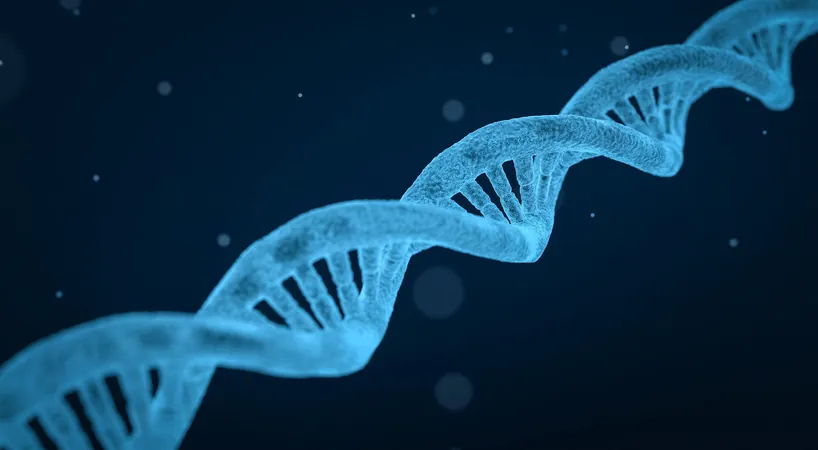
Unlocking the Secrets of Evolution: How Meat-Dominated Diets and a Single Gene Shaped Modern Humans
2025-05-21
Author: Wei
The Evolutionary Leap: From Primates to Modern Humans
Two standout traits differentiate modern humans from their primate cousins: our towering height and higher basal metabolic rate. Recent research published in *Cell Genomics* uncovers a genetic mutation that may have played a crucial role in the evolution of these characteristics, especially linked to a meat-heavy diet.
Meat: The Catalyst for Human Growth
According to co-authors Jin Li and He Huang from Fudan University, the shift from a primarily plant-based diet to one rich in meat marks a pivotal moment in human evolution. "This dietary transformation has shaped numerous traits in anatomically modern humans, including height," they observe.
Genetic Discoveries: The ACSF3 Variant
By leveraging the UK Biobank—which encompasses genomic data from half a million individuals—the research team identified over 6,000 genetic variants connected to height and basal metabolic rate. After thorough analysis, a particular variant, known as rs34590044-A, stood out due to its significant role in elevating the expression of the ACSF3 gene in the liver, setting humans apart from other apes.
Diving Deeper: The Role of ACSF3
Shaohua Fan, another researcher from Fudan University, emphasizes that while traits such as height have received extensive study, the evolutionary forces behind them are less understood. To bridge this gap, the team performed in-depth analyses of the ACSF3 variant using cellular and mouse models.
The Mechanism at Work: Mitochondria and Metabolism
Although the full mechanism of how ACSF3 functions remains elusive, initial findings suggest it is linked to mitochondria, which could explain its impact on metabolism. Notably, heightened ACSF3 levels appeared to encourage bone formation, potentially contributing to increased height.
Implications for Understanding Health and Disease
In experiments with mice on a meat-centric diet imbued with essential amino acids, researchers noted that overexpressing ACSF3 led to greater body length and an elevated metabolic rate. This ongoing exploration of genetic and dietary interactions is crucial for unraveling the complexities of human evolution.
A Broader Perspective on Evolutionary Dynamics
The team stresses the significance of combining various research methods, including advanced experiments and analyses of ancient DNA, to deepen our understanding of evolutionary history. As Fan points out, this study sheds light on the complex interplay of genetic, environmental, and demographic factors that shaped anatomically modern humans and holds vital implications for addressing contemporary metabolic disorders like diabetes and obesity.
Conclusion: A New Lens on Human Evolution
The findings underscore not just a link between diet and physical traits, but also hint at a rich tapestry of genetic factors that have crafted our species' survival and adaptation in a rapidly changing world.




 Brasil (PT)
Brasil (PT)
 Canada (EN)
Canada (EN)
 Chile (ES)
Chile (ES)
 Česko (CS)
Česko (CS)
 대한민국 (KO)
대한민국 (KO)
 España (ES)
España (ES)
 France (FR)
France (FR)
 Hong Kong (EN)
Hong Kong (EN)
 Italia (IT)
Italia (IT)
 日本 (JA)
日本 (JA)
 Magyarország (HU)
Magyarország (HU)
 Norge (NO)
Norge (NO)
 Polska (PL)
Polska (PL)
 Schweiz (DE)
Schweiz (DE)
 Singapore (EN)
Singapore (EN)
 Sverige (SV)
Sverige (SV)
 Suomi (FI)
Suomi (FI)
 Türkiye (TR)
Türkiye (TR)
 الإمارات العربية المتحدة (AR)
الإمارات العربية المتحدة (AR)